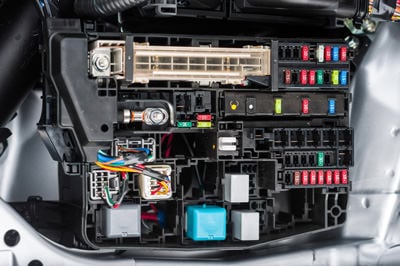Professional mechanical engineering industry support guidance for your business needs.
Wiki Article
Top Tips for Effective Electrical System Troubleshooting
Troubleshooting electric systems calls for a systematic strategy, based in a thorough understanding of electrical concepts and safety protocols. By acquainting oneself with circuit parts, using important devices, and sticking to a structured evaluation method, specialists can successfully recognize and settle issues. Nevertheless, the subtleties of efficient troubleshooting expand past mere technical understanding; recognizing just how to record findings and prioritize safety and security can substantially affect results. As we discover these important components better, it comes to be clear that mastering this process is not simply beneficial but important for success in the area.Understand the Basics
Comprehending the fundamentals of electrical systems is necessary for efficient troubleshooting, as a strong foundation enables professionals to identify and deal with issues extra effectively. A detailed understanding of electric concepts, such as voltage, current, resistance, and power, is critical in identifying the origin creates of troubles. Voltage is the electric potential distinction that drives current with a circuit, while resistance opposes the circulation of current, affecting the general capability of the system.Familiarity with circuit components, consisting of resistors, capacitors, diodes, and switches, is likewise extremely important. Each part plays an unique function in circuit behavior and can affect performance when malfunctioning. In addition, understanding collection and identical circuit setups is crucial, as these arrangements influence the distribution of voltage and current within the system.
Specialists have to be mindful of potential risks, such as shock and short circuits, to execute risk-free troubleshooting methods. By understanding these fundamental concepts, service technicians improve their capacity to conduct efficient diagnostics and repairs, eventually leading to improved efficiency and dependability of electrical systems (electrical system troubleshooting).
Gather Necessary Equipment
Efficient troubleshooting of electrical systems calls for the ideal set of tools to diagnose and fix issues accurately. Crucial devices include a multimeter, which gauges voltage, existing, and resistance, allowing for accurate evaluations of electric components.Additionally, shielded hand devices such as screwdrivers, pliers, and wire pole dancers are important for safely controling electrical connections. It is also suggested to have a circuit tester accessible to verify the existence of voltage in electrical outlets and cords. For more facility systems, a thermal imaging cam can help identify overheating components, showing possible failures.

Comply With an Organized Strategy
Having actually collected the ideal devices, the following action in repairing electric systems is to adhere to an organized approach. A systematic approach makes certain that professionals can identify mistakes successfully and properly, decreasing downtime and protecting against unneeded repair services.Begin by examining the system's schematic layouts and specs. Comprehending the style and operational parameters will offer context for detecting problems. Next, isolate the problem location by making use of a procedure of elimination. This involves monitoring each element systematically, beginning with the source of power and working in the direction check over here of the load.
Use testing equipment, such as multimeters and oscilloscopes, to gather objective data concerning voltage, present, and resistance at various factors within the system. This empirical evidence will certainly guide your troubleshooting initiatives and help to validate or get rid of potential reasons of failure.
In addition, think about ecological elements that might affect the system's performance, such as temperature level variations or dampness access. An extensive inspection of electrical wiring, connections, and elements additional hints will make sure that all possibilities are made up.
Document Your Searchings For
Thorough documents is important in the troubleshooting process of electrical systems. This technique not only help in recognizing the root reason of the problem yet additionally offers as a reference for future troubleshooting initiatives.
Furthermore, preserving a log of parts replaced or repair services executed is very useful. This information supports inventory monitoring and can assist analyze the long life and dependability of specific parts.
Inevitably, the documents process must be detailed yet succinct, making it possible for simple access and review - electrical system troubleshooting. By prioritizing comprehensive documents, service technicians can produce an important data base that not only help in existing troubleshooting yet also equips future maintenance efforts, thereby enhancing general system integrity

Prioritize Precaution
Identifying the intrinsic risks connected with electric systems is critical for guaranteeing security throughout troubleshooting. Electric shock, burns, and tools damages are just a few of the possible threats that service technicians face. Prioritizing safety steps is not only a lawful responsibility however also a moral vital that safeguards both the professional and the surrounding environment.Before starting any kind of troubleshooting job, professionals should don proper individual safety tools (PPE), including protected handwear covers, safety glasses, and flame-resistant clothes. Ensuring that the workspace is completely dry and without mess can dramatically reduce the risk of crashes. Furthermore, it is necessary to de-energize circuits before starting any job, verifying that they are not live with the usage of a multimeter or voltage tester.
Establishing clear interaction protocols with group participants is also important; this makes certain that everybody is aware of potential hazards and the status of the electrical system being worked with. Having an emergency reaction strategy in place can confirm very useful in the occasion of an occurrence. By focusing on precaution, specialists can properly mitigate look here risks and promote a more secure workplace.
Conclusion
Reliable electric system troubleshooting relies on a thorough understanding of essential principles and a systematic approach. Prioritizing safety and security measures makes certain the wellness of people included and the integrity of the electric system.Report this wiki page